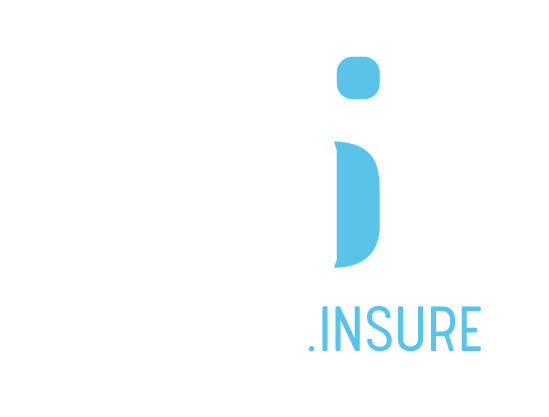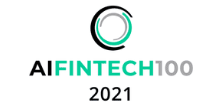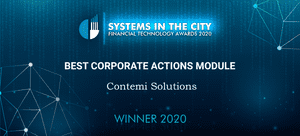Digital platforms: An overview of the ecosystem in the insurance industry, trends shaping it, use cases, and strategies going forward.
TRADITIONAL INCUMBENTS, COLLABORATION AND COMPETITION
The livestock auction at Seljord in Telemark, Norway is an old school meeting place, gathering 80,000 visitors once a year. This is a tradition that goes back a hundred years. Even if the main attraction is animals, you can find a variety of merchandise and service providers. With enjoying multiple entertainments, especially fiddles and accordions. This arrangement is a typical analog platform, and the purpose is to enable and promote trade between vendors and customers. A shopping centre is an everyday equivalent where all shops and restaurants share customers.
THE EMERGENCE OF THE DIGITAL ECOSYSTEMS & PLATFORMS
An increasing number of traditional products and services are now made available on digital platforms. As the number of participants expands, more products and services are added and bundled, and new collaboration opportunities emerge. Digital platforms are making it easy to look up any product or service, compare the prices, features, and customer reviews. Followed by exploring an increasing number of new ways of shopping.
As these products and services from different players get connected via digital platforms in one place. Also, allowing customers to fulfil multiple needs through an integrated experience. It is called a digital ecosystem, because they all have a mutual interest, increasing their customer share and business growth. Though they are in competition but also mutually dependent. While co-existing in the digital ecosystem to help make money for each other.
WHY DIGITAL ECOSYSTEMS & PLATFORM HAVE BECOME NEW URGENCY
COVID-19 accelerated the use of digital alternatives and the ecosystem evolution. Everyone who didn’t have to be physically present in the office. They moved their office to home and have been working successfully. People have ordered home delivery of goods & services like never before. With placing food orders by apps, sitting at a restaurant table. There have been a huge number of new sign-ups for music and movie streaming services.
Customers have rapidly learned to engage remotely, and they now expect 24/7 service and frictionless experience in everything they do. Insurtechs have made external integration more practical, easy and affordable.
All this illustrates the massive scalability of digital platforms and the dramatic implications of ecosystems which insurers also understand now.
TOP EXAMPLES OF DIGITAL ECOSYSTEMS AND PLATFORMS
Apple was the first mover on offering a platform for apps, inviting everyone to deliver content. Apps are free for customers except for some with a minor fee and free of cost for developers. The main objective for Apple was to please and retain the iPhone users. This was done successfully, so this turned out to be the winning recipe. BlackBerry had the same target, but they tried to make money from the app producers. They lost in the competition because their number of apps ended up being a small proportion of the apps that Apple gained (source: Tiwani 2014/Arne Krokan, NTNU). When the fear of others making money restricts cooperation, everybody loses, and customers lose the most.
Facebook is the largest digital community on the planet with almost three billion monthly users. Their users are the main source of their content and their main revenue comes from advertising. An increasing number of partners are contributing, and any Facebook user may be a potential customer. New functions and services are launched in a steady stream, and the ecosystem continues to grow.
VALUE CREATION IN THE DIGITAL ECOSYSTEM
Fast and easy access to new sources of revenue
Through smart bundling, companies can create new avenues to bring aboard new innovative products and services more swiftly. Companies can also create multiple touchpoints to engage customers. Increasing the utility of their products and services and give customers more reasons to use them. Normally, one only needs a few keystrokes to begin using the services, and thereafter it will be open, «always». You can search for a particular car model with specifications in a defined area (FINN or eBay), or choose a movie based on the films you have been watching earlier (Netflix or Disney). You are playing your favourite list of music, and at the bottom of the list, you are presented with similar tunes (Spotify).
A hobby musician can record at home, playing the soft synths and digital drums on Pro Tools, and share the project in the cloud, along with friends, living around the world, contributing with guitars and vocals. When the tune is finally mixed and mastered, it is uploaded to DistroKid and thereby published into more than 50 streaming services, for a few bucks.
Rationalizing cost structure
Shared automation and infrastructure between participants lower costs for everyone. Some claim that the costs are gravitating towards zero, because the tools are becoming more available and cheaper over time, and the number of open-source solutions is growing, making it easier to develop and distribute new services.
For example, WordPress is the most favoured developing platform for websites. The basic solution is for free, and new plug-ins are frequently added (freemium) and come with a fee. Spotify is free, but if you don’t want to be badgered by advertisements or prefer an uninterrupted listening experience, you could go for a premium option. At this cost, you get access to 70 million songs (2021). I don’t know about you, but I certainly do not have space for that number of songs on vinyl or CD.
ECOSYSTEMS AND DIGITAL PLATFORMS IN THE NORWEGIAN INSURANCE INDUSTRY
Being only 5.4 million inhabitants, cooperation is crucial, and we will look into some examples.
In 1996 insurance companies launched a joint IT system (DBS) supporting the assessment of car damages, in cooperation with the workshop industry. This made the surveying much easier, and the report would immediately be accessible for both the claim adjuster and the manager of the garage, and it could also be sent by email to the car owner. Piling up for years, those reports can now be fed into a machine learning-powered solution (AI), and new pictures of damaged cars can be compared to similar historic damages, producing a useful estimate.
Another example of valuable partnering from the same decade is the joint 24/7 service centre run by Gjensidige and NAF/SOS, handling road assistance. When one called in for help, they would choose from a national network of trucks, and engage the nearest one, suitable for the purpose. Later they would add the service of bringing a rental car to the place of the accident.
Gjensidige developed a digital platform for all the vendors involved, taking care of the process and communications from the very start until the fixed car was ready to be collected by its owner. This process now involves both the garage and the rental car company Hertz.
APIs for a digitally-integrated insurance ecosystem
Insurers can adopt application programming interfaces (APIs) to enhance digital capabilities and provide a better customer experience at the platforms.
USE CASES – AUTOMOBILE INSURANCE PLATFORMS
For instance, the car industry is contributing to making rental cars accessible 24/7 by offering key-less solutions. Any damage during the lease may be revealed by an app and a phone camera. Another vendor is offering a gate portal with scanning devices checking all passing cars for damages, before and after the rental. These solutions are taking care of the interests of both the customer and the rental car company and securing the evidence to address the bill.
Belron Solutions Using Digital Platforms
Belron Solutions has developed an advanced end-to-end solution for glass repairs, which also is available as a white-label. This digital platform is taking care of all the steps from booking to billing. The car owner may report the damage in an app, and when presented with a few alternative garages to choose from, the car owner will book an appointment for the repair. Insurance cover is verified by the insurance policy, and the system picks the correct windshield for this specific vehicle. The car owner delivers the car to be fixed, pays the deductible, and the bill is transferred to the insurance company, which may handle the bills automatically. All the necessary controls have already been taken care of. Each insurance company get access to comprehensive reports on their portfolio, and they are given the opportunity to allow the other participants to have access to aggregated reports.
CAB
CAB has created a process management tool for the repair shops, supporting the administration activities and the flow of cars through all the stages until it’s fixed, also engaging the car owner from the booking to collecting the shiny car. Pricing is as per negotiated agreements between the workshop and the insurance company. This will help services evolve, benefitting the customers, the repair shops and insurance companies, in optimizing capacity, quality and costs.
If other vendors are to be included, entering new products or services, the overall costs might be utterly reduced, and the car owner may expand the use of the platform for EU control, buying extra equipment, and searching for trade-in car offerings.
Tesla
USE CASES – PROPERTY & CASUALTY INSURANCE
Sensors are already well known in property insurance, as smoke detectors, and fire – and burglary alarms. Sensors are developed for fans and pumps and all kinds of production environments, to reduce the risk of an outage or fire etc. Sharing this information with the insurance company supports better cooperation, higher trust, and reduced costs, including insurance pricing. A land-based fish farm is an example of the diverse need for extensive monitoring of many factors. Wrong temperature, too little oxygen, too much ammonia or deviation on ten other variables could lead to great loss.
Early Times
Today
Concerning the personal insurance line of business! There has been a cooperation with NAV (the Norwegian Labour and Welfare Administration) enabling the exchange of information, making it easier and quicker for the customer to get their rightful compensation.
THE FUTURE OF DIGITAL ECOSYSTEMS & PLATFORMS IN THE INSURANCE INDUSTRY
In today’s interconnected world, embracing ecosystems is of paramount importance to address the customer in the moment of need. Ecosystems have the potential to open new revenue streams for insurers, generate new leads, lower distribution costs, increase customer retention, and improve prevention and assistance to reduce claims.
All these new technologies and APIs connecting the services, have a key role in the ecosystems, and also in the insurance industry.
The ecosystems are also developing internally in the companies, for coordinating, standardising, and KPIs. Data warehouse is common, combining and presenting data from all sides of the operations, in dashboards and reports. CRM (Customer Relationship Management) is another shared system containing customer data and activities. CDP (Customer Data Platform) is the next step, collecting data from all kinds of sources, internally and externally, drawing a more complete customer profile. Knowing the customer well enables more relevant and successful product development and marketing.
WHAT DO INSURERS NEED TO DO TO SUCCEED?
Ecosystems are becoming central for insurers. Insurers should replace their on-premise, federated, layered ecosystem with an open insurance architecture. That is collaborative and seamlessly operable with external partners.
They must engage customers, third parties, non-insurance services and other ecosystems by leveraging open APIs. Also with, integrating resources for mutual value generation.
Furthermore, data management and analytics capabilities can help them take advantage of new touchpoints and data. By taking these steps and combining their organizations with platforms. They gain openness, speed, a focus on value, and a data-based customer understanding.
HOW CONTEMI’S DIGITAL PLATFORMS CAN HELP?
Contemi provides a modular, end-to-end insurance platform with open APIs and a broad and growing ecosystem of valuable services – Seamless.insure. The platform enables insurance providers and distributors to quickly transition to an open digital insurance architecture.
It is a cloud-based software as a service platform built on microservices, with a value-based subscription model. It provides insurers with a competitive edge on factors including scalability, compliance, cost efficiency, and security. Along with modernized marketing and enhanced mobile functionality.
Reach out to me or some of my colleagues for a talk on digital ecosystems in the insurance industry, or to see if Seamless.insure can be a good fit for your business. For a demo or free trial, you can also email us at info@contemi.com.











